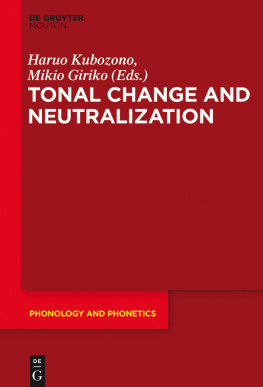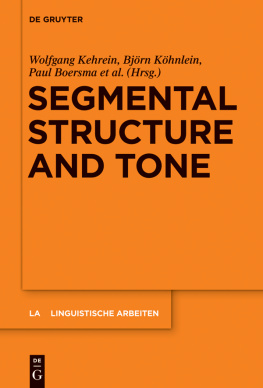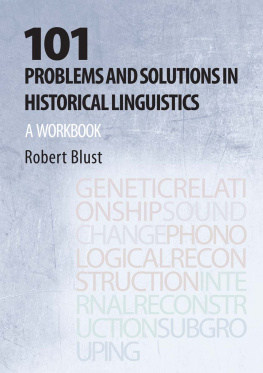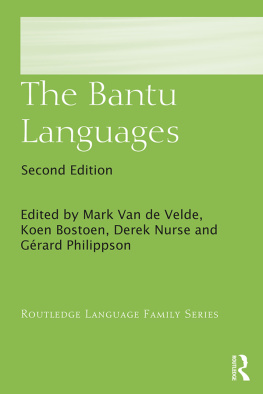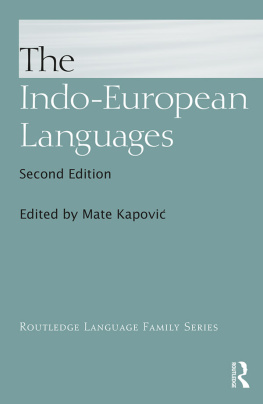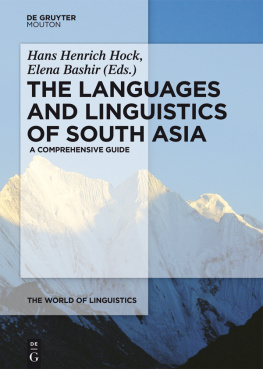Guide

Haruo Kubozono and Mikio Giriko (Eds.)
Tonal Change and Neutralization
Phonology and Phonetics

Editor
Aditi Lahiri
Volume 27

ISBN 978-3-11-056460-0
e-ISBN (PDF) 978-3-11-056750-2
e-ISBN (EPUB) 978-3-11-056506-5
ISSN 18614191
Library of Congress Cataloging-in-Publication Data
A CIP catalog record for this book has been applied for at the Library of Congress.
Bibliografische Information der Deutschen Nationalbibliothek
The Deutsche Nationalbibliothek lists this publication in the Deutschen Nationalbibliografie; detailed bibliographic data are available on the internet http://dnb.dnb.de.
2018 Walter de Gruyter GmbH, Berlin/Boston
www.degruyter.com
Preface
This book originated from two international conferences that we organized in Tokyo in 2013the 2nd International Conference on Phonetics and Phonology (2nd ICPP) held in January and the 3rd ICPP in December. These conferences were hosted by Phonological characteristics of the Japanese lexicon, a research project led by the first editor at the National Institute for Japanese Language and Linguistics (NINJAL) during 20102016. Since this project was focused on word accent and geminate consonants, the two conferences featured accent and tone as the main topic of their special sessions: tonal neutralization in the 2nd ICPP and tonal change in the 3rd ICPP. All chapters included in this volume are based on the oral talks presented by the speakers at these two conferences and/or at their satellite events.
Like other books of the same kind, this volume could not have been published without the help of many people and organizations. First of all, we would like to thank NINJAL for its generous financial support for the above-mentioned conferences as well as for the editorial work that followed them. We would also like to thank the external reviewers of individual chapters who read each manuscript carefully and provided us with invaluable comments, more than once in many cases. Our special thanks also go to the post-docs who devoted their time and energy over the years to the above-mentioned NINJAL project: Manami Hirayama, Yasunori Takahashi, Izumi Takiguchi, and Mayuki Matsui. Thanks to their great help, the six-year project restarted in April 2016 as a new project entitled Cross-linguistic studies of Japanese prosody and grammar (20162022).
Fourthly, we cannot forget the help of Donna Erickson and John Haig who checked the English of individual chapters, more than once in most cases. Sayaka Goto, Gakuji Kumagai, and Natsuya Yoshida also deserve special mention here for their service as editorial assistants. Without these peoples help, it would have been very difficult to publish this volume as it is now.
And last, but not least, we would like to thank the series editor, Aditi Lahiri, for reviewing all chapters and giving us appropriate advice at every important phase of our editorial work.
Haruo Kubozono and Mikio Giriko
Tokyo, July 2017
Haruo Kubozono, Mikio Giriko
Introduction
This is a collection of articles on two closely related topics in tonal phonology: tonal change and neutralization. Neutralization is a phenomenon where a contrast or opposition that exists in a language is lost in some particular context(s) in its synchronic grammar. Tonal neutralization thus refers to a loss of tonal contrast, e.g. Tone A and Tone B, in one context although the contrast exists in other contexts of the same language. On the other hand, tonal change refers to a historical change in tone that takes place in the course of time. For example, a certain tone may change its phonetic value. It may merge with another tone so that the two tones become indistinguishable from each other in any context. Moreover, a system may acquire new tones or tonal contrasts for some reason.
This book aims to contribute to phonetics and phonology in the following three respects. First, it gives in-depth analyses of tonal changes and neutralizations. Neutralization and change have both been hot topics in the phonological research in the past, but no book has ever been published specifically on tone (except for books on tone sandhi). In this sense, this is the first book to be dedicated to tonal change and neutralization. Specifically, postlexical neutralization discussed in some articles is a new area in prosodic research. Second, the book covers a wide range of tone and pitch-accent languages in Asia, Africa and Europe, with a main focus on Asian languages. It includes new tonal data and analyses of various Japanese and Chinese dialects, many of which are endangered now. Most of these languages/dialects have so far only been reported on in local journals or books. Third, it presents not only novel unpublished data and analyses about individual languages/dialects, but also provides typological perspectives on tonal change and neutralization.
To achieve these goals, this book consists of two parts, Tonal Neutralization (Part I) and Tonal Change (Part II), comprised of six articles each. Each part starts with a typological survey by Larry Hyman, followed by analyses of individual languages/dialects most of which have not been seriously discussed in the literature.
Part I
The volume starts with Larry Hyman s article entitled Towards a typology of postlexical tonal neutralizations, which surveys a number of contributing factors that result in postlexical tonal neutralizations. Distinguishing between intentional vs. incidental neutralization, the author illustrates neutralizations which result from assimilatory processes, reductions, and overwriting (by morphology, syntax or intonation). He proposes typological generalizations on the basis of this analysis.
Hymans typological study is followed by five articles which examine tonal neutralizations in individual languages. In an article entitled Postlexical tonal neutralizations in Kagoshima Japanese, Haruo Kubozono analyzes how postlexical processes affect lexical tonal patterns and how postlexical tonal neutralizations can (or cannot) lead to a loss of lexical contrasts in Kagoshima Japanese, a southern Japanese dialect with two lexical tonal classes. He examines the interactions of lexical accent and two postlexical processes (question and vocative intonation) and demonstrates that while the dialect does not show any tonal neutralization at the lexical level, the lexical distinction is lost in some phonological contexts at the postlexical level.
Toshio Matsuura looks at Nagasaki Japanese, a sister dialect to Kagoshima, in his article Tonal neutralization and lexical category in Nagasaki Japanese. He analyzes tonal neutralizations in this southern dialect, with particular reference to their morphological conditions. Like Kagoshima Japanese, Nagasaki Japanese has two contrastive tonal classes, which, according to previous studies, are neutralized in compounds if their first element contains three or more moras. Based on his original fieldwork, the author demonstrates that Verb-Verb compounds keep the lexical tonal distinction even if the first element contains three or more moras, while some Verb-Noun compounds do neutralize tonal contrasts.
In the article entitled Tone neutralization in the Ikema dialect of Miyako Ryukyuan, Yosuke Igarashi and his coauthors examine tonal neutralizations in a Ryukyuan dialect, which has recently been discovered to have three tonal classes rather than two. Their fieldwork study shows widespread tonal neutralizations in this dialect where the three-way contrast can only be observed in very restricted contexts. They explore the prosodic conditions that bring about the observed neutralizations and propose generalizations about surface pitch patterning in utterances. They also demonstrate that long utterances often exhibit pitch patterns resulting from the Principle of Rhythmic Alternation, which can also trigger tonal neutralization in some cases.

